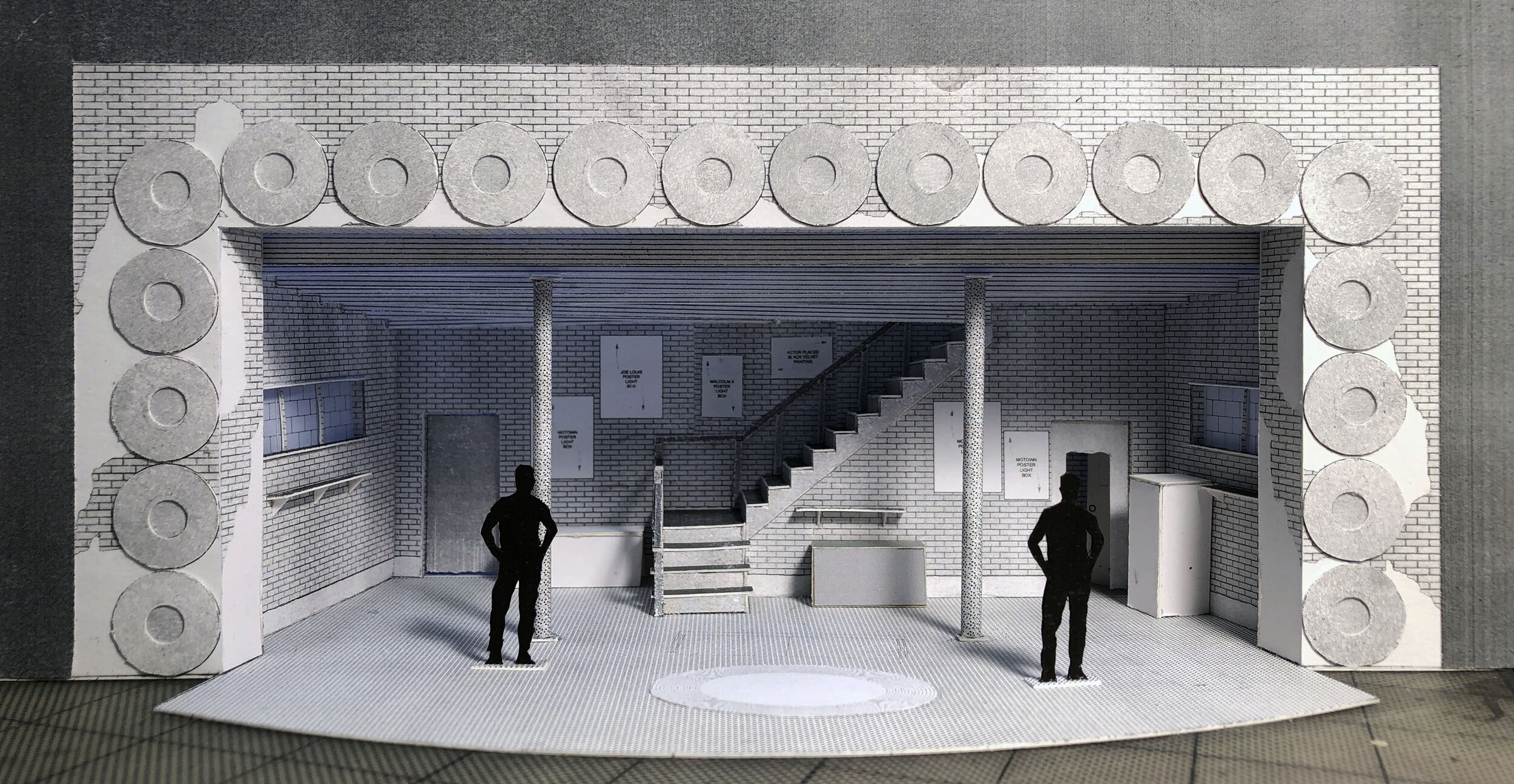Matthew Allar is a scenographer (production designer) from Pennsylvania, based in Williamsburg, Virginia. An Associate Professor of Theatrical Design, Matthew is the resident Scenic Designer for The College of William & Mary. He’s also worked for several television networks including MTV, VH1, TV Land, Nick at Nite, Nickelodeon, and Noggin. Matthew is returning to VSC as set designer for DETROIT ‘67 after designing the set for A CHRISTMAS CAROL in Season 40.
The white set model for DETROIT ‘67. Set design by Matthew Allar.
For those who may not know much about theatre set design … could you briefly walk us through the process of designing a set from your initial concept meetings with the producer to opening night?
While the development of each show follows a bit of a unique path, things always start with a close examination of the text, or in the case of an opera, the music. In addition to key elements such as plot, characters, locations, etc the artistic team is looking for the core thematic material that acts as the spine of the show. Key details associated with the characters encountered in the play are also very useful landmarks. We then move into phases of visual research, looking and architectural and atmospheric details found in things like period photographs or artwork, catalogs, advertisements, etc. At this stage, we are also beginning to think about color palettes the evoke the mode of the show, and practical arrangements of space. Working in collaboration with other members of the artistic team (the director and other designers) the scenic designer then develops a series of sketches, renderings, architectural drafting, and sometimes a scale model of what the scenic environment with look like. This process usually involves several revisions to ensure that the design fully serves the collective goals for the production. The scenic designer then works directly with members of the technical staff to translate these ideas into the fabricated scenery that the audience will see. A large group of carpenters, painters, and props artisans play a crucial role in the realization of the earliest ideas.
Allar’s set design for A CHRISTMAS CAROL. Photo by Rico Marcelo.
What are some of the unique and challenging aspects of set design, in general, that theater audiences may not know about?
There's a lot of small nuances required of a successful design that might not be known to the audience, but definitely plays a key role in the overall production. Designers spend a great deal of time on how to orchestrate, and delineate space. This is realized in a document called a ground plan, similar to a floor plan for a home - but with a lot of extra theatrical information. A good ground plan allows the actors in the show to move smoothly through the space, embodying the environment in an effortless way. Scenic designers also are challenged with keeping a close eye on the entire color palette for the environment, factoring in period details from vintage items, with newly fabricated elements. The goal is often to make it look seamless and completely expected, but usually a great deal of work goes into making it look like very little has been done.
What are some of the particular challenges in designing the set for Detroit ‘67?
The set for Detroit '67 must very specifically evoke the time and place associated with the play's title. There's no getting around it. This puts a heavy burden on the props, furniture and set dressing in particular. It's also important to infuse a sense of history into the set. The audience needs to feel both the present and the past in this space so finding ways to visually depict that in the design take on a big significance
What kind of training or education prepared you for becoming a scenographer?
There are a lot of different pathways to this type of work. Mine began as a performer in middle and high school. I was fortunate to have a couple of exceptional teachers who in high school taught me how to love theatre and in college taught me how to create it. I have earned an undergraduate degree in theatre from Muhlenberg College with some additional study in London at Goldsmiths College in art school at the Art Students League in NYC. I then went on to complete an MFA in design at NYU. Generally speaking though, some of the best training I've received has been related to ways that artists and problem solvers can remain curious about things - whether they are artistic, technical, social, etc. This kind of education comes from all over the place and can be found in a variety of unexpected places.
Detroit ‘67 begins performances on October 23 with an official opening of October 26, and continues performances through November 10. Get your tickets here.



